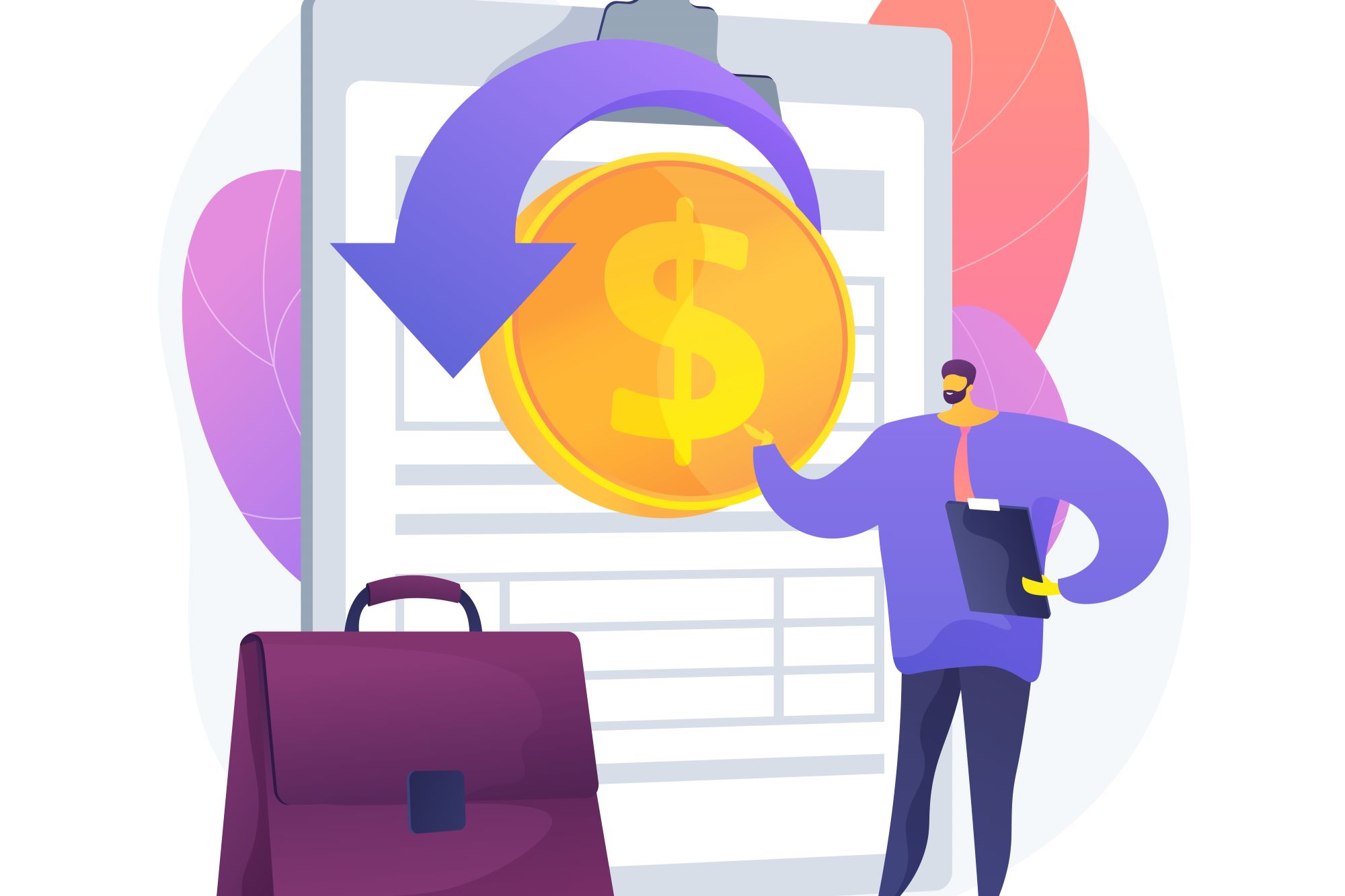In today’s fast-paced world, personal loans can be a lifesaver when you need extra funds for various reasons. But what if you don’t have any assets to pledge as collateral? Don’t worry! You can still get a personal loan without collateral. This guide will walk you through everything you need to know about securing an unsecured personal loan.
Collateral
Definition of Collateral
Collateral is an asset that a borrower offers to a lender as security for a loan. This asset acts as a form of insurance for the lender. If the borrower fails to repay the loan according to the agreed terms, the lender has the legal right to seize the collateral and sell it to recover their losses. Collateral can be anything of value that can be pledged against the loan, and its value typically must equal or exceed the loan amount to ensure the lender is adequately protected.
Collateral provides a safety net for lenders, reducing the risk associated with lending. By offering an asset as collateral, borrowers are more likely to receive favorable loan terms, such as lower interest rates and higher loan amounts. However, if the borrower defaults on the loan, they risk losing the pledged asset, which can include significant items like homes or cars. This risk underscores the importance of carefully considering the implications of using collateral when securing a loan.
Common Types of Collateral
Common types of collateral include real estate, vehicles, savings accounts, and valuable personal property. Real estate is often used as collateral for larger loans, such as mortgages. Homes, land, and commercial properties are typical examples of real estate collateral. Vehicles, including cars, trucks, and motorcycles, are frequently used for smaller loans or personal lines of credit. The lender places a lien on the vehicle title, giving them the right to repossess it if the borrower defaults.
Savings accounts and certificates of deposit (CDs) are other forms of collateral that lenders commonly accept. These financial assets are preferred because they are liquid and their value is easily determined. Valuable personal property like jewelry, art, and collectibles can also be used as collateral, although these are less common due to the difficulty in appraising their exact value and the challenges associated with their sale if the borrower defaults. Each type of collateral carries its own set of risks and benefits, both for the lender and the borrower.
Why Some Lenders Require Collateral
Lenders require collateral to mitigate the risk of lending money. When a borrower offers collateral, it provides a guarantee that the lender will have a means to recoup their funds if the borrower fails to make the required payments. This assurance lowers the risk for the lender, allowing them to offer better loan terms, such as lower interest rates and larger loan amounts. By securing the loan with collateral, lenders are more confident in the borrower’s commitment to repaying the loan.
Requiring collateral is particularly common for borrowers with less-than-perfect credit or for larger loan amounts where the risk to the lender is greater. Collateral reduces the likelihood of loss for the lender and encourages borrowers to prioritize repayment. However, for the borrower, it introduces the risk of losing the pledged asset if they cannot meet their repayment obligations. This risk necessitates careful consideration and planning to ensure the borrower can fulfill their loan commitments without jeopardizing their assets.
Benefits of Personal Loans Without Collateral
| Benefit | Description | Examples |
| Quick Access to Funds | Unsecured personal loans often have a faster approval process since there’s no need to evaluate collateral. | Emergency medical expenses, urgent home repairs |
| Less Risk for Borrowers | Without collateral, borrowers don’t risk losing valuable assets if they can’t repay the loan. | Borrowers without significant assets to pledge |
| Simplified Application Process | The application process for unsecured loans is generally more straightforward and less time-consuming. | Online loan applications, minimal documentation needed |
Quick Access to Funds
Unsecured personal loans provide a streamlined approval process, allowing borrowers to access funds more quickly compared to secured loans. Since there is no need to evaluate and appraise collateral, the time taken to process the loan is significantly reduced. This quick access to funds is particularly beneficial in situations where immediate financial assistance is required, such as for emergency medical expenses, urgent home repairs, or other unforeseen expenses. Borrowers can often receive approval and disbursement within a few days, or even hours, depending on the lender and their criteria.
This expedited process not only saves time but also reduces the stress associated with waiting for loan approval. It enables borrowers to address their financial needs promptly without the prolonged uncertainty that can accompany traditional loan processes. For individuals in urgent need of cash, the ability to secure a loan quickly can provide significant peace of mind and financial stability.
Less Risk for Borrowers
One of the primary benefits of unsecured personal loans is the reduced risk for borrowers. Since there is no collateral involved, borrowers do not have to worry about losing valuable assets, such as their home or car, if they are unable to repay the loan. This aspect makes unsecured loans an attractive option for individuals who do not have significant assets to pledge or who prefer not to risk their assets.
Without the threat of asset forfeiture, borrowers can focus on repaying the loan based on their financial capabilities and circumstances. This can provide a sense of security and confidence, knowing that their essential assets are not at risk. However, it is still crucial for borrowers to manage their loans responsibly to avoid potential negative impacts on their credit score and overall financial health.
Simplified Application Process
The application process for unsecured personal loans is generally more straightforward and less time-consuming compared to secured loans. Borrowers are not required to provide extensive documentation or undergo the appraisal process that is necessary when offering collateral. This simplification makes it easier for individuals to apply for loans, especially those who may find the process of providing and valuing collateral cumbersome or challenging.
A simplified application process can involve online applications, minimal documentation, and quicker approval times. For many borrowers, this ease of access is a significant advantage, making the loan process less intimidating and more accessible. It allows borrowers to focus on meeting their financial needs rather than navigating complex loan application procedures.
Eligibility Criteria for Unsecured Personal Loans
Credit Score Requirements
A good credit score is crucial for securing an unsecured loan. Lenders use your credit score to assess your creditworthiness, which is a measure of how likely you are to repay the loan. A higher credit score indicates that you have a history of managing your credit responsibly, which reassures lenders that you are a low-risk borrower. Typically, a credit score of 670 or higher is considered good, but the exact requirement can vary by lender. Those with excellent credit scores (above 740) are more likely to receive favorable loan terms, such as lower interest rates and higher loan amounts.
Your credit score is determined by several factors, including:
- Payment history
- Amount of debt
- Length of credit history
- New credit inquiries
- Types of credit accounts
To improve your credit score, focus on:
- Paying your bills on time
- Reducing your overall debt
- Avoiding new credit inquiries
- Maintaining a mix of credit types
- Regularly checking your credit report for errors
Income and Employment Verification
Lenders will verify your income and employment status to ensure you can repay the loan. This verification process typically involves providing recent pay stubs, tax returns, or bank statements. A stable and sufficient income reassures lenders that you have the financial capacity to make your loan payments on time. Self-employed individuals may need to provide additional documentation, such as profit and loss statements or business tax returns, to demonstrate their income stability.
In addition to verifying your income, lenders may:
- Contact your employer to confirm your employment status
- Review your consistent employment history with the same employer or within the same industry
- Evaluate recent job changes or gaps in employment history
If you have recently changed jobs or have gaps in your employment history, be prepared to:
- Explain these changes to the lender
- Provide any supporting documentation that highlights your current financial stability
Debt-to-Income Ratio
A low debt-to-income (DTI) ratio indicates that you have a manageable level of debt relative to your income, improving your chances of approval for an unsecured personal loan. The DTI ratio is calculated by dividing your total monthly debt payments by your gross monthly income. Lenders use this ratio to assess your ability to take on additional debt. Generally, a DTI ratio of 36% or lower is considered favorable, though some lenders may accept higher ratios depending on other aspects of your financial profile.
To improve your DTI ratio, focus on:
- Paying down existing debt
- Increasing your income where possible
Reducing your debt levels not only lowers your DTI ratio but also positively impacts your credit score. Additionally, increasing your income through:
- A higher-paying job
- Additional part-time work
- Other income-generating activities
Maintaining a low DTI ratio demonstrates to lenders that you have sufficient income to cover your debt obligations, increasing your likelihood of loan approval.
How to Improve Your Chances of Approval
Boosting Your Credit Score
Boosting your credit score is one of the most effective ways to improve your chances of securing an unsecured personal loan. Start by paying all your bills on time, as payment history is the most significant factor in your credit score. Late or missed payments can significantly harm your score, so setting up automatic payments or reminders can help ensure you never miss a due date. Additionally, focus on reducing your debt, particularly high-interest credit card balances. Keeping your credit card balances below 30% of your credit limit can positively impact your score.
Another important step is to check your credit report regularly for errors. Mistakes on your credit report, such as incorrect account information or fraudulent activity, can lower your score unfairly. You can request a free credit report annually from the major credit bureaus and dispute any inaccuracies you find. Also, avoid opening new credit accounts unnecessarily, as each application results in a hard inquiry on your credit report, which can temporarily lower your score. By following these steps, you can steadily improve your credit score and enhance your attractiveness to lenders.
Reducing Existing Debt
Reducing existing debt can significantly improve your chances of getting approved for an unsecured personal loan. High levels of debt can raise red flags for lenders, indicating that you may struggle to manage additional loan payments. To reduce your debt, start by creating a budget that prioritizes debt repayment. Focus on paying off high-interest debt first, such as credit card balances, while making minimum payments on other debts. This strategy, known as the debt avalanche method, can save you money on interest and help you pay off debt faster.
Another approach is the debt snowball method, where you focus on paying off the smallest debts first, which can provide a psychological boost and build momentum as you eliminate each debt. Whichever method you choose, the goal is to lower your overall debt levels and improve your debt-to-income ratio. Additionally, consider consolidating multiple high-interest debts into a single loan with a lower interest rate. This can simplify your payments and potentially reduce your monthly debt obligations, making it easier to manage your finances and improve your loan approval prospects.
Providing Proof of Stable Income
Lenders want to see that you have a reliable source of income to ensure you can make your loan payments. Providing proof of stable income is crucial in the loan application process. Gather documentation that demonstrates your income, such as recent pay stubs, tax returns, or bank statements. If you receive income from multiple sources, be sure to include all relevant documentation to give lenders a complete picture of your financial situation.
For self-employed individuals, proving stable income can be more challenging. In this case, you may need to provide additional documents, such as profit and loss statements, business tax returns, or 1099 forms. Consistent income over several months or years can help reassure lenders of your financial stability. Additionally, if you have recently secured a higher-paying job or have other income-boosting changes, include supporting documentation to highlight these improvements. By clearly demonstrating a stable and sufficient income, you can increase your credibility with lenders and improve your chances of loan approval.




